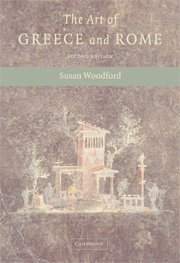Book contents
- Frontmatter
- Contents
- List of Illustrations
- Acknowledgements
- Maps
- Introduction
- PART I THE ARCHAIC AND CLASSICAL PERIODS: PROGRESS AND PROBLEMS
- PART II THE FOURTH CENTURY BC AND THE HELLENISTIC PERIOD: INNOVATION AND RENOVATION
- PART III THE ROMAN WORLD: ADOPTION AND TRANSFORMATION OF THE GREEK LEGACY
- Epilogue
- Appendix: How We Know What We Think We Know
- Glossary
- Further reading
- Index
Introduction
- Frontmatter
- Contents
- List of Illustrations
- Acknowledgements
- Maps
- Introduction
- PART I THE ARCHAIC AND CLASSICAL PERIODS: PROGRESS AND PROBLEMS
- PART II THE FOURTH CENTURY BC AND THE HELLENISTIC PERIOD: INNOVATION AND RENOVATION
- PART III THE ROMAN WORLD: ADOPTION AND TRANSFORMATION OF THE GREEK LEGACY
- Epilogue
- Appendix: How We Know What We Think We Know
- Glossary
- Further reading
- Index
Summary
Helen, thy beauty is to me
Like those Nicean barks of yore,
That gently o'er a perfumed sea,
The weary, wayworn wanderer bore
To his own native shore.
On desperate seas long wont to roam,
Thy hyacinth hair, thy classic face,
Thy Naiad airs have brought me home
To the glory that was Greece
And the grandeur that was Rome.
Ode to Helen Edgar Allan PoePoe's ode is addressed to the legendary beauty who, though married to King Menelaos of Sparta, was carried off by the Trojan prince, Paris. Menelaos thereupon summoned his allies and, having assembled a mighty army under the command of his brother Agamemnon, king of Mycenae, sailed to Troy and fought there for ten years until the city was sacked and Helen was recovered. This is a famous story and one that has often inspired poets, but its connection with the glory of Greece and the grandeur of Rome may not be immediately obvious.
The myth of Helen and the Trojan War seems to have had historical roots in the period around 1250 bc. People speaking an early form of Greek were then already living in Greece and had produced a flourishing civilisation that we call Mycenaean, naming it after the richest and most powerful of its centres. By the end of the 12th century bc, for reasons that are still obscure, this civilisation lay in ruins. Populous sites had become deserted, trade had ceased, skills were lost and crafts declined.
- Type
- Chapter
- Information
- The Art of Greece and Rome , pp. 1 - 3Publisher: Cambridge University PressPrint publication year: 2004



